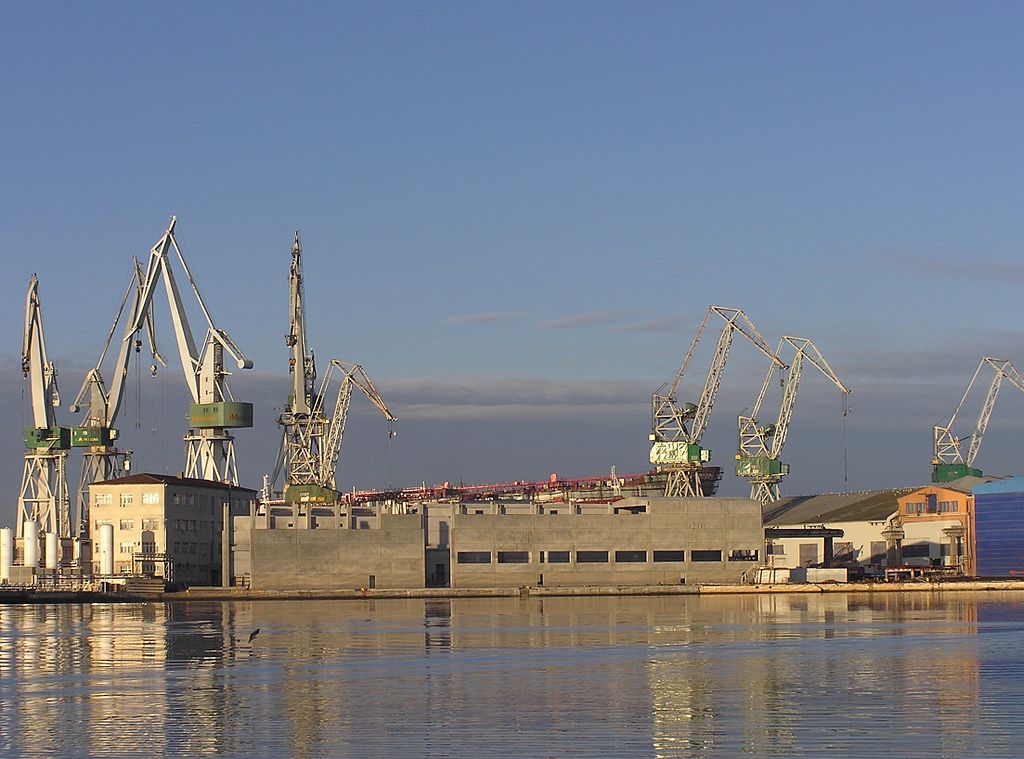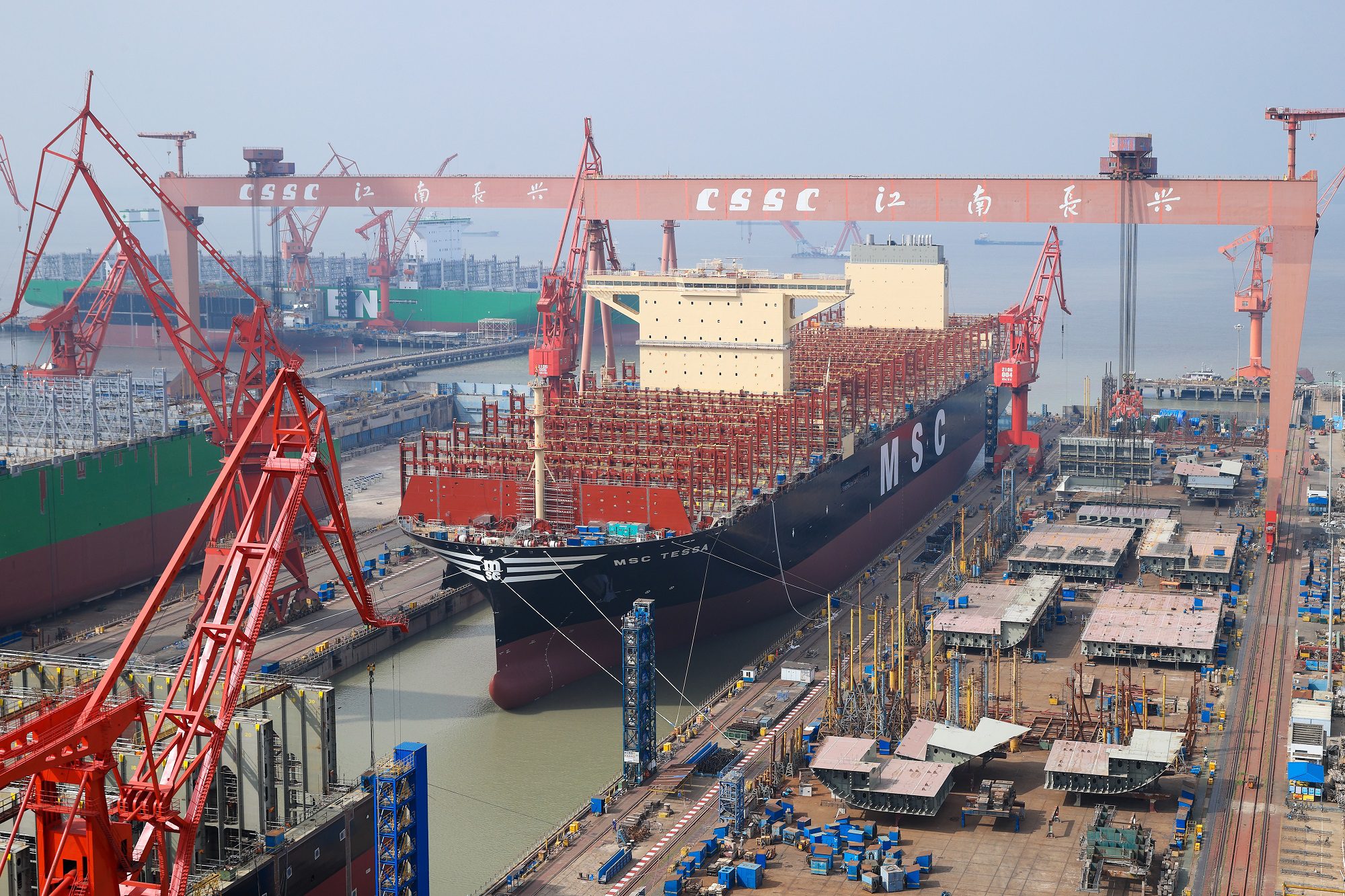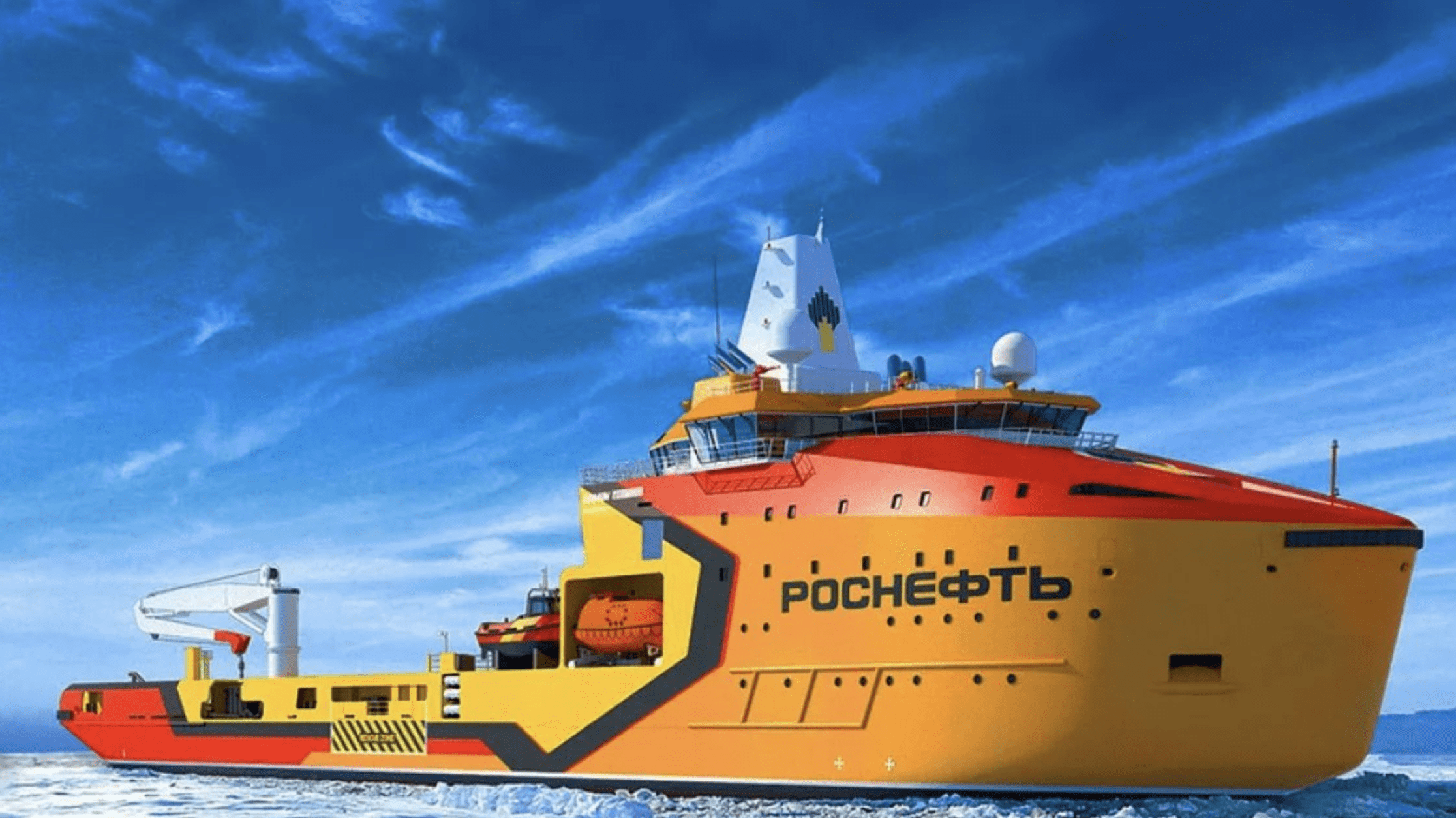The Uljanik shipyard in Pula, Croatia. File photo.
By James Gomez and Jasmina Kuzmanovic (Bloomberg) — Its portholes without glass and covered in rust and seagull guano, the Santiago I tanker sits moored in the Adriatic Sea abandoned by striking shipyard workers who haven’t been paid for eight months.
At the next dock, a Belgian dredger is partly enshrouded in scaffolding, though with no one around to finally make it seaworthy. Towering overhead, a crane has nothing to hoist. Such is the state of another one of Europe’s historic shipbuilding centers that finds itself at risk of extinction, unable to compete with Asia and desperate for investment.
This is the Croatian port of Pula, 85 miles (135 kilometers) across the water from Venice and home to Uljanik d.d., a 163-year-old complex of stone buildings, tin warehouses and slips commissioned by Austro-Hungarian Emperor Franz Joseph I. With the Croatian government rejecting a plan to spend $1.1 billion on Uljanik and a neighboring yard, it risks becoming a relic of a bygone era alongside the Roman-built Temple of Augustus across the street.
Its hopes are now pinned on a delegation from China in town this week to look at a possible takeover. After meeting with Croatian Prime Minister Andrej Plenkovic, China Shipbuilding Industry Corp. Chairman Hu Wenming said his company will give the shipyard “our serious consideration.” The government didn’t reveal much after the officials left, with Economy Minister Darko Horvat saying only that they expected to be notified later of the Chinese partner’s intention.
“I’ve spent a quarter of Uljanik’s life here,” said union leader Djino Sverko, 59, after a tour of the yard, which once made battleships for the Austro-Hungarian navy. After generations of providing employment when Croatia was part of Yugoslavia, “now when we have our own country, the government is going to close it down—it’s a huge mistake and a paradox,” he said.
The chief executive officer of the Uljanik Group, Emil Bulic, said he first needs as much as 80 million euros ($90 million) to keep the firm open for the next six months, pay the strikers and regain the confidence of customers. His company owns the yards in Pula and the Croatian port of Rijeka.
The threatened demise of Uljanik came about in part because of alleged mismanagement and after Croatia relinquished the state’s majority holding before joining the European Union in 2013. It reflects the plight of European shipbuilders facing growing competition from Asia, where the world’s largest shipbuilding facilities are located.
With the so-called merchant ship construction of container vessels and oilers going to South Korea, China and Japan, European yards are being forced to develop into “niche” facilities, specializing in luxury yachts, cruise liners, sea platforms and oceanographic vessels. In the Polish city of Gdansk, home to the Solidarity movement that helped topple communism, the iconic shipyard has turned to renewable energy, making equipment for offshore wind farms.
Unlike in the EU, Asian governments consider shipbuilding strategic and gladly use the state to support the industry, said Christophe Tytgat, secretary general of Brussels-based Sea Europe, the continent’s shipyard and maritime equipment association. As long as that unlevel playing field exists, European shipbuilding will suffer more closures, he said.
State-owned Chinese companies have also purchased stakes in port facilities across Europe, including Piraeus in Greece and in Rotterdam in the Netherlands. It’s part of a wider spree, especially in the Balkan region, where Chinese firms are currently building Croatia’s longest bridge and have taken over Serbia’s biggest copper mine and steel company.
“With problematic cases like Uljanik, I hope a consciousness in Europe will be created that it’s really time to do something,” Tytgat said. “What’s important is that if that yard would go down, close or reduce the number of people working there, then basically an entire region will be impacted.”
At its height during communism, the Pula yard had more than 8,000 workers, making it the biggest employer for a population of roughly 60,000.
The city traces its shipmaking roots to a Roman settlement and still attracts visitors to its well-preserved Roman arena and portals. Though Pula relies more and more on tourism to fill city coffers, townspeople, including Mayor Boris Miletic, consider the shipyards Pula’s heartbeat, more a way of life and identity than a money-spinner.
Indeed, with only about 1,600 employees left and most of those on strike, direct and indirect contributions to the city budget have dwindled. There has been talk about transforming the shipyards, located on prime waterfront in Pula’s center, into a marina of high-priced apartment buildings and hotels to expand tourism. Miletic, though, denied any plans.
When Miletic took office in 2006, Uljanik produced about five vessels a year, providing about 5,000 direct and indirect jobs, he said. It contributed 26 million kuna ($3.9 million) a month to the local economy in the form of city and state taxes, supply chain employment and food and materials.
“For the city, for the region, but also for the Croatian economy, the shipbuilding industry is very important,” Miletic said from his desk at city hall, located next to Pula’s ancient Roman temple. “It’s very emotional for many, many people.”
The pinch is felt everywhere: on the streets, where the familiar sight of overall-clad metalworkers is now rare; in the shops, where local foot traffic has slowed to a crawl; in the homes, where unpaid workers seek other ways to bring food to the table.
In a cozy bakery, where the forgotten Santiago I oil and chemical tanker looms in the glass window, only one customer sat with a coffee and a cake, giving Violeta Hronopulu little to do but wipe the counter continuously and fuss with the array of goods on display.
“You can feel the effect of what’s happening in Uljanik everywhere,” said Hronopulu. “You don’t even need to ask why tables are empty.”
As the city suffers, CEO Bulic has stayed up nights trying to forge a way forward. A former employee of the local branch of British American Tobacco Plc, he took over a year ago and has been trying to shore up finances.
On March 26, authorities arrested 12 former Uljanik managers on suspicion of causing more than 1 billion kuna in financial damage to the company and the state budget, according to local media.
Two days later, the Croatian government rejected a plan to inject another 7.5 billion kuna into the ailing company because it’s “simply too expensive for our taxpayers,” said Prime Minister Plenkovic. He said a restructuring plan submitted by Uljanik’s former strategic partner Brodosplit, a privately-owned shipyard in Split, was unsustainable. The partnership has now ended.
The company suffered first by the state cutting its stake to 25 percent. That made private loans harder to get and already-thin profit margins were squeezed. The rest was self-fulfilling, as construction delays led to cancelled contracts and more losses of both finances and trust.
“It’s hard to be competitive after a year of facing a bankruptcy procedure, but we are still in talks with the government and with our strategic partner on a restructuring program that would cost significantly less than the amount that has been floated in public,” Bulic said.
Managers are worried that the unfinished Belgian dredger will be towed 100 kilometers north to Italy’s Trieste port for completion. And fear is running high among locals.
At the Nono Italian restaurant, owner Tatjana Tomljenovic was trying to entice meandering tourists to pizza. “Uljanik is a symbol of Pula,” she said. “It is sad that this symbol is now being forcefully extinguished. The effects of this will be political, economic and psychological, and will last for a long time.”
© 2019 Bloomberg L.P

 Join The Club
Join The Club











